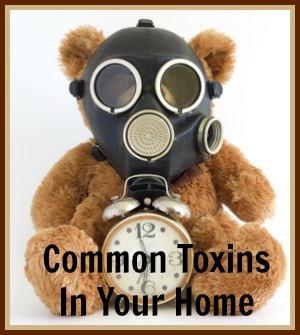
Common Toxins Around The Home and How to Get Rid of Them
Home is where the heart is, but it’s also where some common toxins lurk. Home should be a happy and safe place to enjoy and recharge, to shelter from the wider world. Unfortunately, there are some potentially unsafe and unhealthy toxins and conditions in just about every room of the average home.
In the Kitchen
The kitchen is one of the most frequented rooms in the home, and it has a lot of potential for supplying home toxins. The Centers for Disease Control and Prevention reports that staphyloccocal food poisoning most often originates in the kitchen. Staphyloccocal aureus is a common bacteria found on skin and in nasal passages. It’s resistant to heat and salt and makes hand-washing before, during and after food preparation vital.
Other sources of kitchen toxins:
- Non-stick cookware – Overheating nonstick cookware releases toxic fumes strong and deadly enough to kill nearby pet birds and causes flu-like symptoms in people called Teflon flu. Avoid Teflon-coated nonstick cookware and use cast iron, stainless steel or glass instead.
- Tap water – The Environmental Protection Agency (EPA) reports tap water can be contaminated with microbial pathogens that can be eliminated by boiling, and lead and nitrates, which cannot be eliminated by boiling. Home water filtration systems may remove differing levels of contaminants. These products range from carbon filters to reverse osmosis to distillation units.
- Plastic – Plastic food containers can be toxic when heated in the microwave by leaching chemical BPA into contents. Glass does not leach any chemicals into food and is a much healthier food container.
In the Bathroom
Bathrooms can harbor mold and toxic chemical fumes from air fresheners and cleaners. Eliminate commercial air fresheners and chemical cleaners and use natural cleaning solutions such as lemon juice or pine oil mixed with a mild detergent.
The CDC reports that exposure to mold can cause respiratory tract symptoms such as coughing, wheezing and sometimes severe reactions like fever and shortness of breath. To clean up mold, thoroughly clean surfaces with mild soap and water or a bleach solution and then thoroughly dry the cleaned surface. The source of mold should be investigated and addressed to eliminate future problems.
Around Your Home
Walk through your home to see what other potential common toxins there may be, such as areas painted before 1978 that may have lead paint, furniture treated with toxic fire retardants or sources of carbon monoxide leaks.
The EPA recommends separating areas to be remodeled that have lead paint with barriers such as plastic sheeting or proper exhaust ventilation to avoid stirring up and exposing occupants to contaminated airborne particles.
Replace furniture and carpet that has been heavily treated with fire retardant chemicals. Be careful when removing treated carpeting by wearing nose- and face-covering masks and eye protection. Don’t reupholster furniture that contains foam, which is normally treated with fire retardant chemicals.
Prevention is the best way to avoid carbon monoxide poisoning. Inspect all fuel-burning appliances regularly as well as the ventilation in your home. If you use a home alarm system, it may have a CO2 monitoring feature, or you can use a carbon monoxide detector.
About The Author Timothy ThompsonTim is a DIY master and father of three from Staten Island. We want to thank him for this information on common toxins in our homes, we believe it will be a benefit to you our readers.
Check out these great sections
